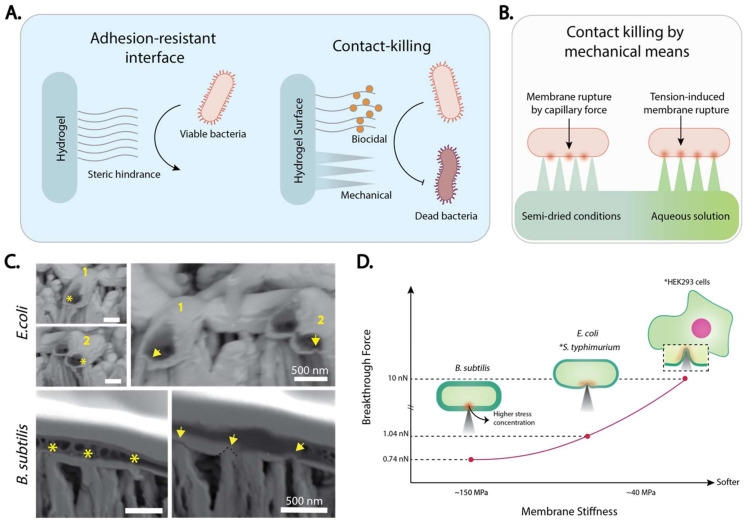Figure 8.
Bactericidal nanostructures fabricated in BC. (A) Typical antibiofouling and antimicrobial strategies implemented on hydrogels and very compliant materials. (B) Contact-killing via mechanical means can be the result of capillary forces in the air-liquid interface as well as tension-induced mechanical rupture. (C) Indentation of the bacterial envelope in Escherichia coli and Bacillus subtilis in contact with nanostructured BC. The asterisks and arrows indicate the indentation left on the bacterial envelope by the BC’s nanostructures before and after the cross-sectional cut, respectively; (D) average force values necessary to penetrate B. subtilis, E. coli, S. typhimurium, and HEK93 cells as a function of the membrane stiffness. Reproduced with permission from [20]. (Copyright © 2022, American Chemical Society).

